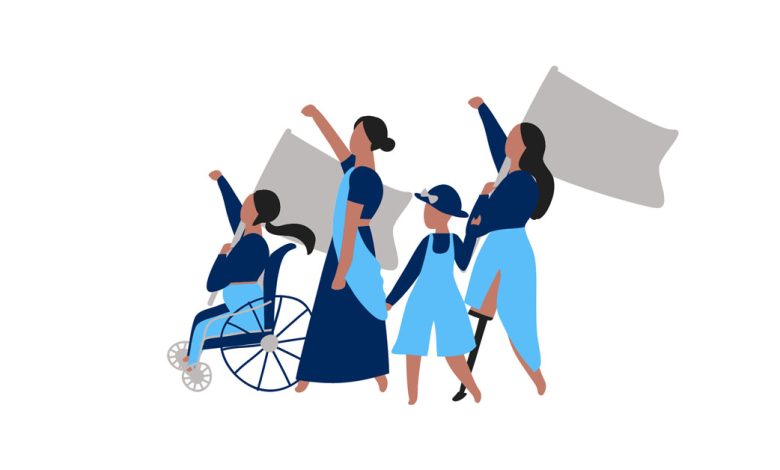Daily Current Affairs for UPSC
Persons with Disabilities (PWDs)
Syllabus- Indian Society [GS Paper-1]

Context- Removing disability-related questions from the sixth round of the National Family Health Survey is causing an uproar.
Key Highlights
- The Parliament’s Standing Committee on Social Justice and Empowerment pulled up the Union government for its failure to accurately estimate the number of persons with disabilities (PwD).
Information on Persons with Disabilities (PWD):
- According to the UN Conventions on the Rights of Persons with Disabilities, disabled persons are persons who have a long-term physical, mental, intellectual or emotional disability, which, combined with various obstacles, can prevent their full and effective participation in social life on an equal footing with others.
- According to the National Family Health Survey, between 2019 and 2021, the number of people with disabilities in India has decreased from 2.2 percent (26.8 million) as estimated by the Census of India in 2011 to one.
- According to the 2011 census, 20 percent of people with disabilities in India have mobility impairments, 19 percent are visually impaired, 19 percent are hearing impaired, and 8 percent are combined.
Problems and challenges of PWD
- Social Stigma: The word disability is considered a social stigma that makes parents feel ashamed of their children and most of them feel uncomfortable in public before.
- Institutional Failures: India’s education system and government institutions fail to ensure the welfare of the disabled to some extent.
- Classrooms and examination centers must have suitable seating for the disabled.
- Illiteracy is particularly common among people with disabilities and represents a double disadvantage.
- Apart from the disabled, illiteracy isolates them.
- Unemployment: People with disabilities are scapegoats for layoffs during recessions.
- They are the first to be cut when companies adopt cost-cutting measures.
- Stress: A person with a physical disability faces a lot of stress due to lack of social relationships.
- In addition to increased physical and emotional stress, the injured person is destined for a similar outcome in his social life.
What needs to be done?
- The education system should be reformed to build a better society through which people with disabilities can face the challenges of life with courage and conscience.
- Job-oriented education is the need of the hour.
- Training should include well-trained professionals who can ignite the senses and serve these needs of the service industry.
- Teachers of singing and language should be employed for the general welfare of the nation.
- Camps should be organized to distribute free bicycles to the poor and ensure proper facilities for them.
Government plans and initiatives
- Department of Empowerment of Persons with Disabilities: To understand the special needs of persons with disabilities, the government has created a special department under the Ministry of Social Justice and Empowerment.
- ‘Divyang’: The Prime Minister coined the term ‘divyang’, which means disabled people, to change the attitude of society and encourage them to participate in society without feeling inferior.
- Accessible India Campaign: The campaign was launched in 2015 to create an accessible environment for Divyangjan.
- With the project, ramps, support points and accessible toilets are planned in public places.
- Sugamya Bharat: To understand the problems of Divyangjan, the government launched Sugamya Bharat.
- The app allows people to provide feedback on accessibility features for people with disabilities.
- Unique Disability Identity Project (UDID): The project aims to facilitate the certification of disabled people by eliminating fraud.
- Divya Kala Shakti: Government of India scheme to encourage participation of divyangjan in cultural activities.
- Acquisition/Installation of Assistive Devices and Equipment for Persons with Disabilities (ADIP): Under this program, the government provides aids and assistive devices to persons with disabilities.
Conclusion
- People with disabilities are one of the most vulnerable areas of the country.
- They can also be a source of untapped potential which, if well exploited, can increase the economic growth and development of the country.
- The need of the hour is to sensitize the community about the problems of the disabled and remove the social stigma associated with their integration into society.





.png)



